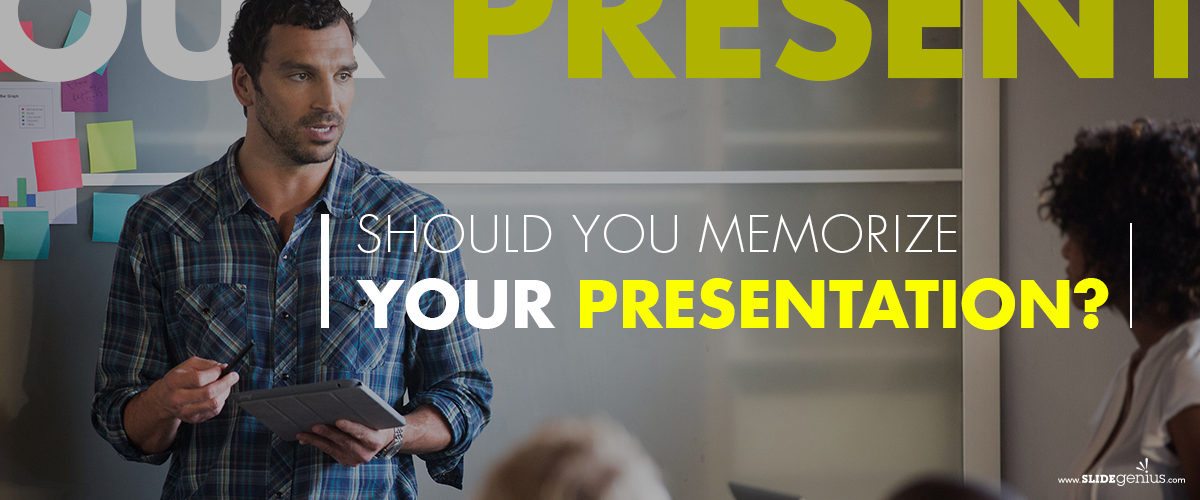Taking presentation ethics to heart may increase your speaking credentials, but your audience also judges your credibility based on your speech patterns.
Though these conversational behaviors are unintentional, they still derail your image, hamper your flow, alienate your listeners or, worse, downplay your business presentation’s effectivity.
[sg-blog-modules module=three]
Here are four common public speaking habits you should avoid at all costs, along with their potential remedies:
1. Overusing Qualifiers
Qualifiers are words like “very,” “really,” or “somewhat” that emphasize or modify the degree of a statement. Though they limit or enhance the information presented, using them excessively weaken your message’s impact.
These modifiers are commonly used for hedging or expressing vague language. They’re useful in narrative writing, but have no place in professional presentations. Using this set of words lessen your authority and diminish the impact of your message. You can get away with it to make your statement sound more solid and credible.
Avoid overusing qualifiers because it only delays your main thought, shunning audiences in an instant. For example, saying “I believe we are the best ad agency in the district” can sound less appealing than “We are the best ad agency in the district.”
Don’t be hesitant to omit words or substitute them with more assertive ones. Be confident and direct to maximize your credibility.
2. Adding Question Tags
A tag question or tail question is used to confirm someone’s understanding or connect with another person’s thoughts or feelings. Short phrases like “Isn’t it?”, “Don’t you?”, and “Aren’t you?” are few of the common examples of this conversational pattern.
Adding these short questions at the end of your statement is not the best way to affect a conversational tone. In fact, a study found that tag questions have indirectly adverse effects on audience’s perceptions of the speaker’s credibility.
This speech habit brings confusion to your presentation, sabotaging your message’s quality and making you seem in need of approval and validation. It can also lead to a misconception that you lack self-belief and knowledge on the topic.
Don’t let these speech fragments weaken your sentence’s ending. Think of other ways that can help involve people in the conversation.
Asking an independent question can be an effective alternative to tag questions. Transition your message with a follow-up question, such as: “This research is another breakthrough in the marketing industry. What are your impressions on this?” to better engage your audience.
3. Repeating Filler Words
Filler words are another verbal hiccup that undermine your public speaking reputation. They are short utterances or words that are added unconsciously to a sentence for no reason.
These include the dreadful words “Um”, “Well”, “You know” and “Uh”. Although they don’t have meanings, they still have an effect to your listeners.
Repeated and excessive use of filler words is the best way to lose your audience and weaken your credibility. This conversational routine can distort your message and distract people from what you’re saying.
Curb this bad public speaking habit by listing down your ideas prior to your business presentation. This lessens the panic, making you speak more comfortably and confidently.
Practicing speech pauses also helps overcome the “Um” problem. Pause to your advantage to give yourself some time to think and respond more effectively.
4. Up-Talking
Are you guilty of ending your sentence with a high vocal pitch? This practice is called high rising terminal (HRT) or up talk.
It’s a habitual pattern that makes a simple declarative sentence sound more like a question because of the rising intonation. Doing this leaves people an impression of you being weak and feeling inferior to them.
In a survey conducted by Pearson, 85% of research participants said that up talking indicates a person’s insecurity or emotional weakness while 57% of them believed that it damages a person’s professional credibility.
This implies that speaking in a very high pitch is discouraged especially when doing business pitches. When you make an important point like “Our sales are increasing,” avoid saying it like “Our sales are increasing?”
Ending it like a question only makes your statement tentative and uncertain. Your goal is to inform your audience, not to confuse them.
If you’re a natural up-talker, practice breathing exercises prior to your presentation. This allows you to relax and maintain your vocal range and speak with conviction without the rising intonation. Developing a sense of certainty. Learning how to communicate a sentence gives you confidence, so do it often.
Conclusion
It’s impossible to captivate your audience if they don’t see you as confident and credible. Bad speaking habits and patterns such as qualifiers, tag questions, filler words, and up-talking disrupt people’s attention and harm your credibility.
Excessive use of qualifiers delay and weaken a message’s impact. Break free from this habit by making your statement more direct. Adding question tags at the end of your sentence can make you look like asking for approval from others. Instead, ask them a follow-up question to catch their attention.
The dreaded filler words are one of the culprits to effective public speaking. Practice speech pauses to speak more comfortably and confidently. Up talking causes people question your certainty about a topic. Some breathing exercises might help in cooling you down and helping you avoiding speaking in high-pitched voice.
Eliminate these bad speech patterns to effectively deliver your business presentations.
Need help planning for your professional presentations? Book a meeting with SlideGenius. All it takes is fifteen minutes.
[sg-blog-modules module=two]
References
“3 Speaking Habits That Are Damaging Your Credibility.” No Freaking Speaking. n.d. Accessed February 5, 2016. www.nofreakingspeaking.com/index.html/3-speaking-habits-that-are-damaging-your-credibility/
Marr, Bernard. “Want A Promotion? Then Don’t UpSpeak!” LinkedIn. January 20, 2014. Accessed February 5. 2016. www.linkedin.com/pulse/20140120061951-64875646-want-a-promotion-then-don-t-upspeak?trk=tod-home-art-list-large_0
“Hedges, tag questions, message processing, and persuasion.” Academia. Accessed February 5, 2016. www.academia.edu/744111/Hedges_tag_questions_message_processing_and_persuasion




